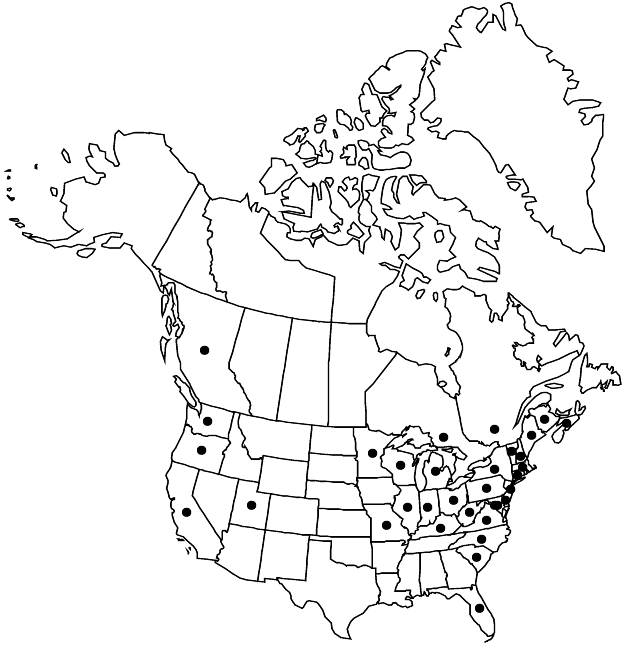Silene armeria
Sp. Pl. 1: 420. 1753.
Plants annual, glabrous throughout, ± glaucous, sometimes glutnous in distal parts; taproot slender. Stems simple, branched in inflorescence, (10–)20–40(–70) cm. Leaves: basal withering before flowering, blade lanceolate-spatulate, 2–5 cm; cauline sessile to amplexicaulous, blade lanceolate to ovate or elliptic, 1–6 cm × 5–25 mm, apex acute. Inflorescences cymose, bracteate; cyme capitate or with flowers clustered at end of slender branches; bracts lanceolate-acicular, 2–10 mm. Pedicels 0.1–0.5 cm. Flowers: calyx usually purple tinged, 10-veined, elongate, clavate, lobed, constricted proximally into narrow tube, 13–17 × 2.5–4 mm, rather membranous; lobes ovate-triangular, ca. 1 mm, apex obtuse; petals pink (rarely white), unlobed, limb obovate, ca. 5 mm, base cuneate into claw 6–8 mm, auricles absent, appendages linear to lanceolate, 2–3 mm, apex acute; stamens slightly longer than petal claws; styles 3(–4), exserted. Capsules oblong, 7–10 mm, opening by 6 (or 8) spreading teeth; carpophore 7–8 mm, glabrous. Seeds dark brown, reniform-rotund, less than 1 mm diam., rugose. 2n = 24 (Europe).
Phenology: Flowering summer.
Habitat: Waste places, disturbed ground
Elevation: 0-1200 m
Distribution

Introduced; B.C., N.B., N.S., Ont., Que., Calif., Conn., Del., D.C., Fla., Ill., Ind., Ky., Maine, Md., Mass., Mich., Minn., Mo., N.H., N.J., N.Y., N.C., Ohio, Oreg., Pa., S.C., Utah, Vt., Va., Wash., W.Va., Wis., Europe.
Discussion
The long-tubular, clavate calyx enclosing the unusually long carpophore helps to distinguish Silene armeria. It is an occasional and adventive garden escape.
Selected References
None.